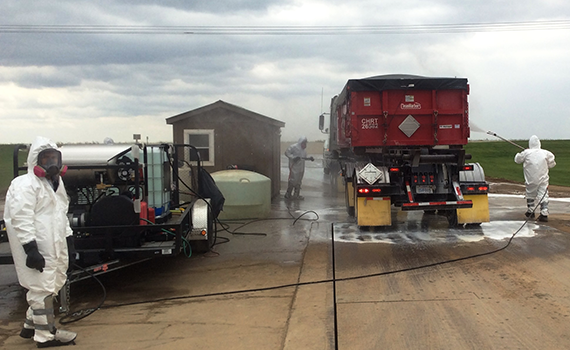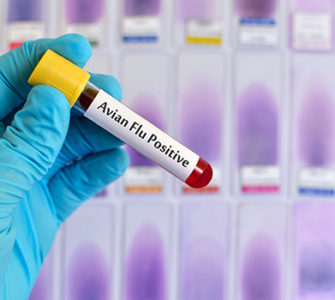Flu panel examines US control efforts, impacts on trade
By Jackie Linden
Special to Poultry Health Today
With well over 200 outbreaks affecting more than 47 million poultry over the last six months, highly pathogenic avian influenza (HPAI) is hitting the US poultry industry hard.
Not only are there huge challenges of bringing the outbreaks under control at home, but many of the previously buoyant export markets for US chicken meat also have been closed or, at best, restricted.
Current situation on HPAI
Among the challenges of talking avian influenza (AI) viruses is that they are constantly changing, according to Dr Mary Pantin-Jackwood, veterinary medical officer at Southeast Poultry Research Laboratory in Athens, Georgia.
Not only do the viruses undergo antigenic drift over time, they also can mix with other AI viruses from wild birds, for example, and undergo gene reassortment in a process known as antigenic shift. By these processes, she explained, a low-pathogenic AI virus circulating harmlessly in wild ducks can become a highly pathogenic virus causing disease and losses in domestic poultry, mammals and even people.
Between 2012 and 2015, Pantin-Jackwood showed that low-pathogenic AI viruses of many types have been reported across the world. Since 1959, 36 disease events have been confirmed to have been caused by HPAI viruses, some of which are known to have developed from low-pathogenic types.
The intercontinental drift of the H5N8 HPAI virus is a case in point. Pantin-Jackwood showed how the virus, first detected in wild birds and poultry in South Korea and Japan in early 2014, was spread and underwent reassortment into the H5N2 and H5N1 HPAI virus types that have been identified in North America since the fall of 2014.
While the H5N8 virus has affected poultry in Asia and Europe since 2014, H5N8, H5N2 and H5N1 types have all troubled Canada. The all-Eurasian H5N8 has thus mixed with North American low-pathogenic viruses, resulting in the new H5N2 and H5N1 viruses, which are of mixed origin.
Between December 2014 and February 2015, all three virus types were detected in the westernmost states of the US – firstly in wild birds, then in backyard flocks and finally in commercial poultry in California.
Since March 2015, the H5N2 HPAI virus has spread eastward and as of June 2, 2015, Pantin-Jackwood said, 226 premises with more than 42 million poultry have been affected as well as 72 confirmed cases in wild birds.
Finally turning to control measures, Pantin Jackwood explained that federal and state authorities are tackling outbreaks through quarantine, eradication, monitoring, disinfection and testing.
USDA, meanwhile, is actively looking for AI viruses with its partners, testing commercial poultry operations, live bird markets and wild bird populations.
Controlling HPAI
Stamping-out is the preferred method to control highly pathogenic avian influenza (HPAI), according to Dr David Swayne, laboratory director at Southeast Poultry Research Laboratory, USDA Agricultural Research Service.
Experience from his sabbatical with the World Organization for Animal Health (OIE) around the world has shown that stamping-out is associated with shorter eradication times than vaccination.
However, he said, vaccination will continue as an HPAI management tool for control in some countries. It can limit disease and infection until changes are made in poultry production that allow stamping-out programs to be initiated.
Vaccination does prevent disease and reduce infection rates, but it does not eradicate the HPAI virus. It is the stamping-out part of the program – in other words, biosecurity, culling, education, surveillance and diagnosis – that will lead to eradication.
Swayne stressed that effective control of HPAI using vaccination requires the right vaccines and correct administration.
Only high-quality vaccines should be used and they need to contain only antigenically relevant seed strains, he said.
He stressed the need for a targeted vaccination program, based on a risk assessment of the different types of poultry, their location and the structure of the industry. It is also important to use adequate numbers of vaccinations.
To ensure the long-term success of the vaccination program, Swayne said vaccinated birds must be monitored for protective titers, and boosted if they are not protected.
Furthermore, he added, vaccinated populations need to undergo surveillance so that the emergence of any vaccine-resistant virus strains is recognised promptly.
If resistant strains are detected, they can subjected to genetic and antigenic analysis so that vaccine seed can be selected and the vaccine strain updated so the program has the best chance of success in protecting the birds.
Impacts on poultry meat trade
The export landscape for US poultry has become more complicated since the first outbreaks of HPAI in December 2014, according to Will Sawyer, vice president of Rabobank Food and Agribusiness Research (FAR) Group.
He showed that the majority of the 40 most important markets for US chicken meat have imposed a ban on imports only from HPAI-affected states. With the possible exception of Arkansas, the affected states are not those at the heart of the US broiler industry but rather, they focus on egg and turkey production.
Expressing concern over the prospect of the disease spreading to the main broiler-growing regions of the east and south-east of the country by migrating wild birds, Sawyer said: “AI is a moving target.”
Price has been driving trade to Canada, he said, as leg quarters have been falling over the last quarter. However, strong domestic demand combined with lower feed costs have helped keep prices for white meat high enough to maintain overall profitability for broiler producers.
While Americans understand that HPAI poses no significant health risks to them, it is seen as a consumer perception issue in China, for example, he said.
As a result, Rabobank data indicate rising profit margins for broiler production since 2013 in the Western Hemisphere (North America and Western Europe) while they have been falling in the Eastern Hemisphere (Eastern Europe, Africa and Asia).
Looking ahead, Sawyer added that most producers will be in a position to bear the forecast fall in leg quarter prices in 2016.
Finally, he warned that if HPAI outbreaks continue to spread and further restrictions are imposed by US export markets, investors may review their decisions. Leading processors are looking at opportunities to use more dark meat in the US in case the situation worsens further in future.
(Photo courtesy of USDA)
Posted on August 2, 2015

















